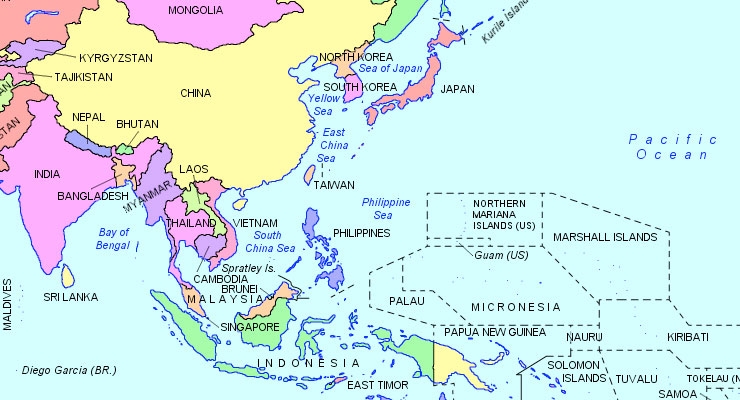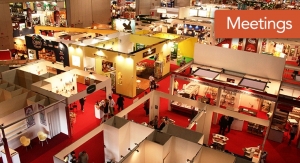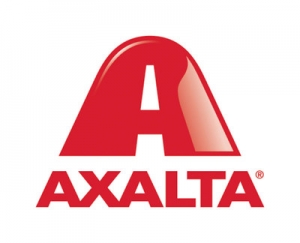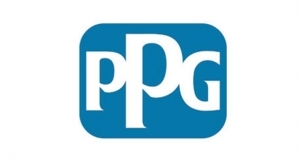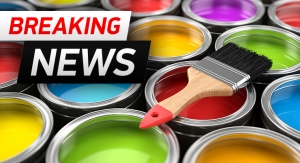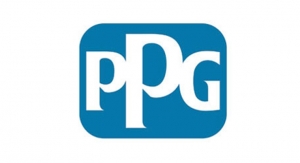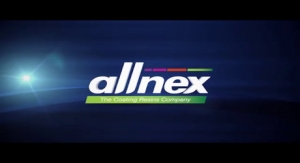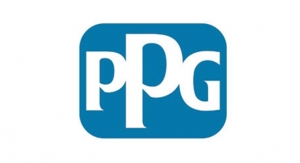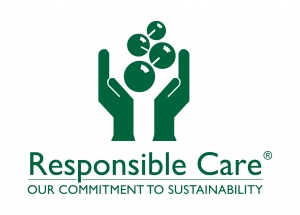08.17.15
Asia is the largest of all continents on the earth. Asia has 30 percent of the world’s land mass with over 60 percent of the world’s population. Its population almost quadrupled during the 20th century. Depending upon how one defines it, Asia is comprised of 51 countries with a population of nearly 4.4 billion people.
Asia has the two most populous countries in the world – China and India. China is the largest country with an estimated population of 1.4 billion in 2014. It accounts for almost one-third of Asia’s total population. India runs a close second to China with an estimated population of 1.3 billion in 2014 and represents nearly 30 percent of the continent’s population. It is estimated that India’s population will surpass China’s before 2030.
In 2013, the total sales of coatings in Asia Pacific were $56,241 million, on approximately 18,543 million liters. Part of Asia Pacific’s coatings industry is comprised of large, fast-growing countries. Two of the largest and fastest-growing coatings markets in Asia Pacific are China and India. In fact, China and India together represent roughly 75% of Asia Pacific’s total coatings volume in 2013. In addition to these large countries, Asia Pacific is also comprised of many smaller, fast-growing countries in terms of coatings consumption such as those in Southeast Asia - Indonesia, Thailand, Malaysia, Vietnam, etc. Asia Pacific also consists of mature, slow-growing countries such as Japan and Australia which have struggled over the years to hold onto their respective market shares of the region. Japan is the second largest Asian market in value for coatings and the third largest market in volume. In stark contrast to China and India, Japan actually experienced negative coatings volume growth over the past five years. Australia also experienced negative coatings growth over the same timeframe.
For this report, the Asia Pacific region has been segmented in the following manner: Australia,China India Japan, South Korea, Central Asia, Southeast Asia (Indonesia, Philippines, Vietnam, Thailand, Malaysia, Myanmar, etc.) and Other Asia Pacific Countries
Volume and Value
It is estimated that the market value of coatings in the Asia Pacific region was $56,241 million in 2013 on a volume of 18,543 million liters. This represents a 9.8 percent annual increase in volume and a 10% annual increase in value since 2008.
Growth over the next five years is forecast to be less robust than the previous five years. Volume growth is projected to be about six percent for the next five years as compared to 9.8 percent for the previous five years. Value growth of the Asia Pacific region is projected to be 7.4 percent between 2013 and 2018 as compared to ten percent for the previous five years. Despite this forecast slowdown in growth over the next five years, the Asia Pacific region is forecast to grow approximately 1.7 percent faster than the global average in volume and 1.9 percent faster than the global average in value. This will result in a 2018 value of $80,465 million on a volume of 24,842 million liters for Asia Pacific.
Country Distribution
China:
China is the second largest economy in the world behind the U.S. Many economists and global organizations, such as the World Bank are forecasting that China will surpass the U.S. as having the largest economy in the world within the next five years. China has enjoyed unprecedented GDP growth over the past two decades. It is therefore of no surprise that China is now, and has been for years, the largest coatings producing and consuming country on the face of the earth. In 2013, the Chinese coating market was estimated to be $31,331 million on a volume of about 10,681 million liters. China alone accounts for 58 percent of the volume and 56 percent of the value of the Asia Pacific coatings market. China also represents 29 percent of the global volume and 24 percent of the global value of the coatings industry. The size of the Chinese coatings market has grown by over 5,600 million liters since 2008. China is viewed by industry observers and participants as being the engine of growth for coatings, not only within the Asia Pacific region, but also for the world.
For years, economists have been predicting a slowdown in the Chinese economy which will have a direct impact on the growth of the coatings industry. That economic slowdown has occurred. The Asian Development Bank (ADB) has forecast that China’s economy will have slowed to 7.5 percent growth by year end 2014 and to 7.4 percent by the end of 2015. Key activity indicators of the Chinese economy have recently weakened, causing other economists to forecast more modest growth for China over the next several years. It should be noted that even if the Chinese coatings industry grows at a rate of seven percent annually over the next decade, the already largest coatings industry in the world will be twice its current size.
India:
Today, although the Indian paint and coatings industry is still a relatively small portion (eight percent) of the global coating industry, it is certainly one of the fastest growing in both size and importance. India has seen dramatic growth in coatings production over the last decade or so and is now the second largest producer and consumer of coatings within Asia Pacific, increasing from 2,106 million liters in 2008 to 3,105 million liters in 2013. Although India is the second largest producer of coatings within Asia Pacific in terms of volume, it actually ranks third ($5,701 million) in value behind China and Japan. While the Indian economy was clearly impacted by the global recession, it has still been growing at an enviable growth rate, far faster than that of most developed nations. This is the result of the expanding economy and the fact that the Indian coatings industry does not depend heavily on an export market. The Indian coatings industry is dominated by the decorative segment which represents well over 75 percent of the market. Although the industrial coatings segment is less than 25 percent of the total volume of India, this portion of the market is growing rapidly due to increased commercial and government investment in sectors such as automotive, infrastructure, shipping port projects and general manufacturing.
Japan:
Japan now ranks as the number three coatings producing country in Asia Pacific in terms of volume, and number two in value. Unlike some of its Asian neighbors, Japan has been experiencing negative growth in both its economy and its coatings industry in recent years. A contributor to the negative coating growth in Japan has been the outsourcing of a large portion of Japan’s manufacturing sector, shifting coatings consumption to new geographies. In 2008, the size of the Japanese coatings market in volume was 1,532 million liters. Five years later, in 2013, it was 1,341 million liters – a loss of more than 190 million liters. This negative trend is expected to turn around and a small increase in volume (18 million liters) is being forecast to take place by 2018. The disparity between developed parts of Asia Pacific such as Japan and Australia versus the developing countries becomes apparent in the per capita GDP and paint consumption data. The per capita paint consumption in Japan is on par with Western Europe. At 10.5 liters per capita paint consumption, Japan is well over twice the average (4.7 liters per capita) for all of Asia Pacific.
South Korea:
South Korea is the fourth largest market (both in volume and value) for coatings in Asia Pacific. The size of the South Korean coating industry is $3,926 million on a volume of about 888 million liters. South Korea is a mature, slow growing marketplace for coatings. The largest segment of the South Korean coatings industry is the decorative sector, representing less then one-fourth of the total volume. This is a small percentage compared to most other countries in Asia Pacific. For example, the decorative sector represents approximately twice that amount (45 percent) of the total Asia Pacific coatings industry. The next largest coatings segment in South Korea is a close second, general industrial, at 20 percent of the total. The marine coatings segment is important for South Korea. South Korea’s marine coatings segment is second in size only to China. This segment is the third largest sector for coatings in South Korean, representing roughly 15% of its total volume.
Australia:
Australia and New Zealand (Oceania) both have a mature paint industry with a similar end use structure. Since they are mature economies, rapid growth within the Oceania region of Asia Pacific is not expected. The coatings market in Australia is a smaller and more mature market ($1,078 million on 198 million liters) relative to the leading countries in the region. The Australian coatings industry resembles, in many ways, the mature markets of North America and Western Europe. Australia has struggled in recent times with its negative coatings growth (volume) occurring between 2008 and 2013. The value of Australia’s coatings industry is forecast to grow from its 2013 value of $1,078 million to $1,251 million in 2018 – growth of about 16 percent over that five year period.
Southeast Asia:
This group of countries is often referred to as the ASEAN countries (Association of Southeast Asian Nations), which is a political and economic organization of ten countries including Indonesia, Vietnam, Philippines, Thailand, Malaysia, Myanmar, Cambodia, Laos, etc. They are, for the most part, high growth countries where significant opportunities exist for paint and coatings. These countries are experiencing positive growth in the decorative, protective, industrial, wood, automotive and marine sectors.
Although China, South Korea and Japan represent close to 80 percent of the marine coatings industry, new shipping hubs are being established in Southeast Asia, particularly in Vietnam and the Philippines. Southeast Asia has been the beneficiary of the rising costs in Chinese manufacturing operations. This has resulted in OEM plants, and therefore coatings plants, being established in or relocated to Southeast Asia. The movement of investment into low cost countries within Southeast Asia has increased opportunities for paint companies in the region to expand into ASEAN countries like Vietnam, Laos, Myanmar and Cambodia. Vietnam is one of the fastest-growing economies in the Asia Pacific region. Vietnam has been attracting significant investment from industry in recent years. Much of this investment is in construction and infrastructure. The accession of Vietnam into the World Trade Organization (WTO) back in 2007 is proving to be a good move for Vietnam’s business sector. As a member of WTO, Vietnam’s commitments have been to eliminate protectionism in terms of international trade and foreign investment. This has translated into accelerated industrial development, especially in sectors such as automotive and other manufacturing segments which have had, and will continue to have, a positive impact on coatings growth.
Indonesia is also emerging as a strong growth market for coatings. Indonesia has enjoyed an increase in confidence and has been attracting investments from international corporations in recent years, giving a boost to the coatings industry. The establishment of economic development zones, coupled with increased tourism to this country, will help to drive growth in the Indonesian coatings industry over the next several years.
Singapore is also an attractive market for coatings. Singapore actually has one of the highest per capita paint consumption rates in the Asia Pacific region and in the world.
Strong growth of the decorative, protective and marine coatings segments in the ASEAN countries is forecast to continue over the next several years. It should be noted, however, that this part of Asia Pacific is not without its own set of challenges. These challenges include such factors as poor export growth, competition from China, terrorist threats and the generally low investment growth in some of the countries within Southeast Asia.
Central Asia:
Central Asia is the region of the Asian continent that is bordered by the Caspian Sea in the west to China in the east and from Russia in the North to Afghanistan in the south. Central Asia consists of the so-called “stans” countries which were once all republics of the former Soviet Union including Kazakhstan, Kyrgyzstan, Tajikistan, Turkmenistan, Uzbekistan and Azerbaijan. Kazakhstan and Uzbekistan constitute over 80% of the coatings industry in this region. Of these two countries, Kazakhstan is the bigger, faster-growing market with a per capita paint consumption twice that of Uzbekistan. The Kazakhstan building and construction market has been experiencing strong growth in recent years which has fueled the growth of decorative coatings. Significant investment in automotive business has led to growth in the automotive OEM and refinish sectors.
Other Asia Pacific:
The other countries in Asia Pacific are referred to collectively as the “Other Asia Pacific” for the remainder of this chapter.
Competitive Landscape
Like all regions of the world, the multinational coatings companies are playing an increasingly more important role in the Asia Pacific marketplace. However, unlike the mature regions such as Europe and North America, the Western-based multinationals constitute a smaller share of the total market in this region than the large Asian players and the many smaller local players.
There has been some consolidation that has taken place by the multinationals and larger Asian coatings companies throughout Asia Pacific. For example, the China National Coatings Industry Association (CNCIA) estimates that its roughly 700 members represent over 80 percent of the total Chinese coatings industry. This group includes companies such as AkzoNobel Swire Paints, Axalta, Carpoly Chemical Group, BASF Shanghai, International Paint of Shanghai, Guangdong Huarun Paints, Nippon Paint China, PPG Coatings Tianjin, Shanghai Paints, SKSHU Paint Corporation, etc. However, CNCIA estimates that there are still more than 15,000 coatings manufacturers active in the Chinese coatings marketplace. Most of these players are small, somewhat unsophisticated companies. As has occurred in Europe and North America, it is anticipated that the rate of consolidation will accelerate and the number of players will decrease throughout Asia Pacific over the next two decades. This will be the result of (1) the best-in-class regionals being acquired by the multinationals and (2) the weaker, under-financed players having to close their doors as they are not able to conform to environmental pressures and not able to meet the demand for higher quality products by customers. For now and into the foreseeable future, much of the Asia Pacific coatings industry will remain fairly fragmented across many of the sectors.
The top 20 coatings suppliers in Asia Pacific are a blend of the largest Asia-based paint companies and of the multinationals headquartered outside of Asia Pacific. These top 20 suppliers include 13 companies headquartered in Asia (Asian Paint, Chugoku, Kansai, Nippon Paint, Nipsea, Sk Kaken, etc.), four multinationals headquartered in Europe (AkzoNobel, BASF, Jotun and Hempel) and three multinationals headquartered in the U.S. (Axalta, PPG and Valspar). Of these, the top handful of players, which account for well over 25 percent of the Asia Pacific coatings industry, include AkzoNobel, Nippon Paint and Nipsea, Kansai, PPG and Asian Paint.
AkzoNobel, combined with its 2008 acquisition of ICI, holds a leading market position in the Asian coatings industry. This includes being a leader in the Chinese decorative and industrial markets and having a very strong presence in powder coatings within the region. International Paint, a business unit of AkzoNobel, gives the company a solid position in the large marine & protective coatings segments in Asia Pacific. It should be noted that over the last several years, Asia Pacific has become the largest, fastest-growing market for marine coatings in the world.
AkzoNobel and Nippon Paint / Nipsea are the leading decorative paint suppliers in Asia Pacific, followed by Asian Paints. Kansai, Valspar, Berger Paint (India) and Dulux (Australia) are in the next group of suppliers of decorative coatings in Asia Pacific. PPG continues to increase its share of the Asian coatings market through organic growth and acquisitions. In addition to the successes in other sectors, PPG and Axalta have carved out leading positions in the automotive OEM and refinish markets in China. Valspar has a large presence in the industrial coatings market in China and is active in the decorative coatings sector through its 2006 acquisition of Huarun Paints. Since its 2010 acquisition of Wattyl, Valspar has been increasing its share of the Australian decorative coatings segment as well.
The Japanese companies, Kansai Paint and Nippon Paint, are not only the market leaders in Japan but are also major suppliers in China and other countries throughout the Asia Pacific region. Chugoku Marine Paints, another Japanese-based company that sells paint in the marine and industrial sectors, now has three paint plants in China.
While many of the local and regional paint companies in Asia Pacific concentrate on the low-end parts of the market, an increasing number of the larger paint manufacturers are offering high quality coatings that compete directly with the multinationals, at least in certain end use markets. For example, Guangdong Carpoly Chemical Group, Guangzhou Strong Chemical and Daoqum are Chinese companies that offer high-end products, although none of them have very large market shares.
The Indian paint and coatings industry is going through a transition. As a result, foreign multinationals continue to make large investments in the country and the pace of market consolidation is increasing. For example, historically India has had one of the lowest per capita paint consumption rates in the world, even compared to most countries in Asia Pacific. This per capita consumption rate will surely increase over the next decade with the ongoing rise of the middle class. A growing percentage of India’s population, an estimated 1.27 billion in 2014, is able to purchase previously unreachable items such as homes, major home appliances, automobiles and other consumer goods.
Asian Paints and Berger are two of the largest paint companies headquartered in India, with Asian Paints being almost three times the size of Berger. Participation by the large multinational paint companies is also growing in India as well. AkzoNobel, Axalta, BASF and PPG are all active in the Indian automotive refinishes, powder coatings and industrial coatings markets. Two of the large Japanese companies, Kansai Paint and Nippon Paint, have also been growing their positions in India. For example, in 1999, Kansai Paint completed its acquisition of Tata Forbes group and as a result, Goodlass Paints Ltd. became a wholly-owned subsidiary of Kansai Paint Company. In 2006, Goodlass Paints Ltd. changed their name to Kansai Nerolac Paints Ltd. In recent years, Kansai Nerolac Paints has grown to become one of the top three coatings companies in India.
The large Western companies are also increasing their investment in India. For example, a couple of years ago, PPG Industries received the necessary approvals from Indian authorities to build upon its 15 year relationship with India’s largest coatings company, Asian Paints, by expanding its existing coatings joint venture and establishing a second joint venture. PPG’s and Asian Paints’ first joint venture was expanded to include marine, transportation, consumer packaging and industrial liquid sectors. The second 50-50 joint venture in India (Asian Paints PPG Limited) is focused on the powder, industrial container and protective light industrial sectors.
Within India, the so-called “organized” part of the Indian coatings industry is the national, premium end of the market with higher quality and higher priced products. This segment of the industry is served mostly by the large, well-financed coatings companies including an increasing number of multinationals as mentioned above. This “organized” part of the market is estimated to be over two-thirds of the total coatings industry in India. By contrast, the “unorganized” part of the Indian market is still quite fragmented with well over 1,000 small participants. This segment tends to be served by many of the local and regional coatings suppliers.
The rapid growth in Asia Pacific, and in particular growth in China, India and much of Southeast Asia has really gained the attention of the leading Western coatings manufacturers and raw material suppliers over the past 20 years or so. Especially given the slow growth in Western countries, many formulators and suppliers have been focusing on the Asia Pacific region for future growth.
Expanding economies, albeit at lower growth rates, increasing affluence and a broadening of the middle class in countries such as China, India and many in Southeast Asia represent good investment opportunities for coatings manufacturers and raw materials suppliers. For example, in the fourth quarter of 2013, AkzoNobel strengthened its manufacturing footprint in India by opening a new, decorative coatings plant with an annual capacity of 55 million liters. This is AkzoNobel’s sixth factory in India. With its Chinese headquarters located in Shanghai, PPG now has 4,000 employees in Mainland China and operates fourteen manufacturing plants throughout China. In January 2014, Axalta Coating Systems broke ground to expand its manufacturing capacity for coatings with the construction of a new $50 million eco-friendly water-borne facility in the Jiading district of Shanghai. Axalta’s Shanghai water-borne facility is expected to begin production in 2015. This plant will supply up to 25,000 metric tons of water-borne products to support the long term growth of the automotive OEM industry that is rapidly expanding into the western and southern provinces of China. This will augment Axalta’s flagship automotive OEM coatings plant located in Changchun, China.
As part of its expansion strategy throughout the rapidly growing parts of Asia Pacific, in mid-year 2013, Nippon Paint broke ground on its third paint plant in Vietnam, located in the Vinh Phuc province. When completed, this plant will produce general industrial paint coatings for the motorcycle and automotive industries, marine coatings and resins.
In the first half of 2013, BASF established a new, state-of-the-art Coatings Technical Competence Center in Bangkok, Thailand. This plant is designed to support technology transfer, product development and other laboratory activities mainly related to motorcycle coatings within the ASEAN region including Thailand, Vietnam, Cambodia, Malaysia and Indonesia. One can see that the recent drawback in the economies of emerging Asia has not stifled the enthusiasm of, and investment by, those coatings companies having a long-term view of the region.
It is true that the high level of activity in the region presents good opportunities for Western suppliers. However, many of these suppliers underestimate the differences in business culture in the region, particularly between Chinese companies and their Western counterparts. Furthermore, it should be noted that although emerging Asia will continue to represent solid investment opportunities within the coatings industry, the competitive environment is becoming more challenging. As mentioned above, there is an increasing awareness by customers and regulators of the need for higher quality, sustainable technologies. While Europe and North America are lagging on this issue, sustainability will likely become front-and-center within the coatings industry over the next decade in emerging Asia. The multinational companies will continue to make major investments in the region via acquisitions and greenfield investments in manufacturing plants and R&D facilities. At the same time, the larger state-owned and privately-held companies will continue to ramp up to compete more aggressively and effectively with the multinational players in their home markets. Asia Pacific, with all of its diversity, will provide a tremendous stream of revenues and profits for companies who commit the necessary resources to capitalize upon the myriad of opportunities that exist within this region.
Market Trends and Drivers
In comparison to most developed nations, China, India and most of the Southeast Asian countries have historically been more focused on the lower quality, lower priced coatings segments. Limited R&D expenditures by and capabilities of the small, local and regional players have historically resulted in a lower overall level of product quality in this region of the world. Simply stated, price was often the first priority for customers in many Asia Pacific countries in years past, followed by product quality and reliability. Increasingly, an emphasis on lower quality coatings products in Asia Pacific, particularly in certain end use segments (automotive OEM, protective, marine, etc.) has become a thing of the past.
Many segments of the coatings industry within Asia Pacific have been making significant strides in modernizing and meeting the standards of the developed nations. However, there is still a ways to go in many end use segments within most countries. At its present pace of growth, most Asian countries will continue the rapid path to technical and economic parity with the West. New coatings technology migrating into, and being developed within the region is having a positive impact on the Asia Pacific market. Some of this is being driven by public pressure and government regulations. For example, smart coatings, nanotechnology and a range of “green chemistries” are all playing a role in addressing the growing Asian demand for environmentally friendly and sustainable coatings that have more functionality for customers. Much of this trend in improved coatings quality, particularly in the industrial sector, is being driven by the multinational customers of coatings with operations in Asia Pacific that require suppliers to meet global coatings standards.
Throughout parts of Asia Pacific, a greater emphasis is being placed on R&D efforts and “higher technology” formulations due to the increased importance and growth of the industrial coatings sector. Many of these efforts are accomplished through collaboration between the multinational and local/regional companies.
Rapid urbanization and a more stable economy have spurred the proliferation of home improvement supplies stores in some Asia Pacific countries. For example, it is estimated that across Indonesia’s largest cities – Jakarta, Semarang, Surabaya, Bandung, Makassar, etc. – a few thousand large and small retail outlets now exist that supply home improvement materials. The most widely available products, which are sold in 95 percent of these stores, are paints. As more residential structures are being built to meet the needs of a growing population in and around the major cities in Indonesia, Malaysia, Thailand, Vietnam and other countries throughout Asia Pacific, a surge in demand for home improvement supplies is expected.
A result of the diversity of the Asia Pacific region is the uneven distribution of demand within each of the end use segments. The automotive industry is now a focus for development in China, India, Korea and Thailand. The demand for automotive OEM and refinish paints will continue to grow as the pent up demand is fulfilled. Countries like China, India, Thailand, Vietnam and Malaysia are also investing heavily in infrastructure, which increases demand for decorative coatings.
Developing Asia Pacific appears to be placing more emphasis on environmental issues and sustainability. China is out front of the others with its Ministry of Environmental Protection beginning to consider measures that address these issues. Environmental concerns are getting more attention as the Chinese government has put a VOC consumption tax and a VOC emission fee on the agenda for discussion with coatings industry leaders, with the likelihood of being implemented within the next one to two years. There is also a lead-contained coatings elimination program being formed in China focused on with implementation being targeted over the next few years.
The Asia Pacific region has clearly outpaced all other regions of the world since the global recession. The region has posted well over seven percent growth per year in GDP since 2008 in contrast to the slower growing regions of Europe and North America.
China has experienced tremendous economic growth since the late 1970s. In part, the result of economic liberalization policies, the gross domestic product of China increased tenfold between 1978 and 2006, and foreign investment soared during the 1990s. In the first decade of the new millennium, China grew its proportion of global manufacturing output from less than 10% of the global total to more than 20 percent of the total. Greatly contributing to this is the fact that China’s economy grew nearly four-fold from 2002 to 2013. After sustaining decades of annual GDP growth of ten percent or more, in 2007 China passed Germany to become the world’s third-largest economy, and in 2010, it passed Japan to become the second-largest economy. In the past five years, China has contributed significantly more to overall world growth than any other country. Most economists agree that China’s steady growth through the 2008 – 2009 Recession helped prevent the entire global economy from slipping into an even more destructive downturn. China heads the economic class of the so-called BRIC countries of Brazil, Russia, India and China. According to the McKinsey Global Institute, China will have more than 220 cities with populations greater than one million people by 2030, and more than 70 percent of the Chinese population will live in cities with more than one million people by 2025.
While not to detract from China’s impressive historical growth, there is no denying that there has been a recent slowdown in China’s GDP growth compared to past years. According to the official data released by the National Bureau of Statistics of China (21 October 2014), GDP growth for China in the third quarter of 2014 was the slowest growth since the first quarter of 2009, during the depths of the 2008 – 2009 Recession. The year-over-year growth for the third quarter of 2014, according to China’s National Bureau of Statistics, was 7.3 percent.
The massive factory sector within China has slowed dramatically. Economists believe that China has too much manufacturing capacity to satisfy the current, anemic levels of global demand, which have still not been able to fully recover from the financial crisis. As China’s and Southeast Asia’s exports have fallen due to sluggish Western economies, so too has the GDP growth of their economies. While this occurred, there was a leveling off of middle class consumer demand across China which has resulted in thousands of layoffs and tepid sales of products for domestic consumption.
China’s GDP growth is still likely to do better than most other countries. Since the 2008 recession, China, India and many Southeast Asian countries have continued to grow much faster than the global average rate. This is in contrast to other countries in the region, such as Japan and Australia, whose economies have struggled since the 2008 – 2009 recession similar to many of the developed Western economies.
The expectation is that the disparity in growth rates will continue over the next several years. China and India are forecast to experience the greatest growth in GDP per capita to 2018. Japan and Australia are projected to post positive growth but will significantly lag China, India and other parts of Asia Pacific.
Economic Influences
Asia Pacific is influenced by a wide array of economic factors. Demand for decorative coatings is affected by new construction, housing activity and overall affluence. Housing and construction markets has continued to flourish, albeit at a more modest rate, in China, India and other parts of developing Asia Pacific. As an example, new construction spending in the United States and Western Europe since the 2008 – 2009 recession has still not reached pre-recession levels. Over this same period, construction spending in China, India and other Asia Pacific economies remains well above the global average. This trend in construction disparity is projected to continue over the near term.
At the most basic level, industrial coatings demand is a function of the production of end use OEM products such as automobiles, tractors, consumer electronics, furniture, packaging, etc. It is important not to forget that coatings have continued to get a boost from the investment in infrastructure development being made throughout Asia Pacific, particularly in India and China, including new bridges, landmark properties, alternative energy facilities, nuclear power generation, hospitals, schools, etc. Hosting world events such as the 2008 Olympics in Beijing, the 2010 Shanghai World Expo and the 2010 Guangzhou Asian Games has certainly continued to stimulate large infrastructure projects. Much has been made of the changes in the automobile market, with China supplanting the United States a few years ago as the largest car producer in the world. But the transition to the number one automobile market in the world is simply a microcosm of the shifting manufacturing landscape.
The expansion of the global shipping industry including certain coatings advances made in this sector will continue to grow the Asia Pacific marine coatings segment, already the largest in the world, at approximately 70 percent of the total global volume. Ship building, maintenance & repair of ships and overall sea trading have all declined in Europe and North America over the past two decades which has also helped to drive these activities to the lower wage rate countries such as China and South Korea. These factors will almost certainly secure Asia Pacific’s leading position in marine coatings for the next decade or more.
The overall trends in construction and manufacturing are apparent in the GDP data of the various regions. The data suggests that Asia Pacific grew faster than North America and Europe prior to the recession and significantly outperformed Western Economies during the recession. Furthermore, recent data from the International Monetary Fund, World Economic Outlook indicates that despite the slowdown in the Chinese economy as discussed above, the disparity in growth is even greater in the post-recession period than it was in the pre-recession period.
This report was based on information from the “Global Paint & Coatings Industry Market Analysis” report published by management consulting firm, Orr and Boss. For more information on this report go to www.orrandboss.com.
Asia has the two most populous countries in the world – China and India. China is the largest country with an estimated population of 1.4 billion in 2014. It accounts for almost one-third of Asia’s total population. India runs a close second to China with an estimated population of 1.3 billion in 2014 and represents nearly 30 percent of the continent’s population. It is estimated that India’s population will surpass China’s before 2030.
In 2013, the total sales of coatings in Asia Pacific were $56,241 million, on approximately 18,543 million liters. Part of Asia Pacific’s coatings industry is comprised of large, fast-growing countries. Two of the largest and fastest-growing coatings markets in Asia Pacific are China and India. In fact, China and India together represent roughly 75% of Asia Pacific’s total coatings volume in 2013. In addition to these large countries, Asia Pacific is also comprised of many smaller, fast-growing countries in terms of coatings consumption such as those in Southeast Asia - Indonesia, Thailand, Malaysia, Vietnam, etc. Asia Pacific also consists of mature, slow-growing countries such as Japan and Australia which have struggled over the years to hold onto their respective market shares of the region. Japan is the second largest Asian market in value for coatings and the third largest market in volume. In stark contrast to China and India, Japan actually experienced negative coatings volume growth over the past five years. Australia also experienced negative coatings growth over the same timeframe.
For this report, the Asia Pacific region has been segmented in the following manner: Australia,China India Japan, South Korea, Central Asia, Southeast Asia (Indonesia, Philippines, Vietnam, Thailand, Malaysia, Myanmar, etc.) and Other Asia Pacific Countries
Volume and Value
It is estimated that the market value of coatings in the Asia Pacific region was $56,241 million in 2013 on a volume of 18,543 million liters. This represents a 9.8 percent annual increase in volume and a 10% annual increase in value since 2008.
Growth over the next five years is forecast to be less robust than the previous five years. Volume growth is projected to be about six percent for the next five years as compared to 9.8 percent for the previous five years. Value growth of the Asia Pacific region is projected to be 7.4 percent between 2013 and 2018 as compared to ten percent for the previous five years. Despite this forecast slowdown in growth over the next five years, the Asia Pacific region is forecast to grow approximately 1.7 percent faster than the global average in volume and 1.9 percent faster than the global average in value. This will result in a 2018 value of $80,465 million on a volume of 24,842 million liters for Asia Pacific.
Country Distribution
China:
China is the second largest economy in the world behind the U.S. Many economists and global organizations, such as the World Bank are forecasting that China will surpass the U.S. as having the largest economy in the world within the next five years. China has enjoyed unprecedented GDP growth over the past two decades. It is therefore of no surprise that China is now, and has been for years, the largest coatings producing and consuming country on the face of the earth. In 2013, the Chinese coating market was estimated to be $31,331 million on a volume of about 10,681 million liters. China alone accounts for 58 percent of the volume and 56 percent of the value of the Asia Pacific coatings market. China also represents 29 percent of the global volume and 24 percent of the global value of the coatings industry. The size of the Chinese coatings market has grown by over 5,600 million liters since 2008. China is viewed by industry observers and participants as being the engine of growth for coatings, not only within the Asia Pacific region, but also for the world.
For years, economists have been predicting a slowdown in the Chinese economy which will have a direct impact on the growth of the coatings industry. That economic slowdown has occurred. The Asian Development Bank (ADB) has forecast that China’s economy will have slowed to 7.5 percent growth by year end 2014 and to 7.4 percent by the end of 2015. Key activity indicators of the Chinese economy have recently weakened, causing other economists to forecast more modest growth for China over the next several years. It should be noted that even if the Chinese coatings industry grows at a rate of seven percent annually over the next decade, the already largest coatings industry in the world will be twice its current size.
India:
Today, although the Indian paint and coatings industry is still a relatively small portion (eight percent) of the global coating industry, it is certainly one of the fastest growing in both size and importance. India has seen dramatic growth in coatings production over the last decade or so and is now the second largest producer and consumer of coatings within Asia Pacific, increasing from 2,106 million liters in 2008 to 3,105 million liters in 2013. Although India is the second largest producer of coatings within Asia Pacific in terms of volume, it actually ranks third ($5,701 million) in value behind China and Japan. While the Indian economy was clearly impacted by the global recession, it has still been growing at an enviable growth rate, far faster than that of most developed nations. This is the result of the expanding economy and the fact that the Indian coatings industry does not depend heavily on an export market. The Indian coatings industry is dominated by the decorative segment which represents well over 75 percent of the market. Although the industrial coatings segment is less than 25 percent of the total volume of India, this portion of the market is growing rapidly due to increased commercial and government investment in sectors such as automotive, infrastructure, shipping port projects and general manufacturing.
Japan:
Japan now ranks as the number three coatings producing country in Asia Pacific in terms of volume, and number two in value. Unlike some of its Asian neighbors, Japan has been experiencing negative growth in both its economy and its coatings industry in recent years. A contributor to the negative coating growth in Japan has been the outsourcing of a large portion of Japan’s manufacturing sector, shifting coatings consumption to new geographies. In 2008, the size of the Japanese coatings market in volume was 1,532 million liters. Five years later, in 2013, it was 1,341 million liters – a loss of more than 190 million liters. This negative trend is expected to turn around and a small increase in volume (18 million liters) is being forecast to take place by 2018. The disparity between developed parts of Asia Pacific such as Japan and Australia versus the developing countries becomes apparent in the per capita GDP and paint consumption data. The per capita paint consumption in Japan is on par with Western Europe. At 10.5 liters per capita paint consumption, Japan is well over twice the average (4.7 liters per capita) for all of Asia Pacific.
South Korea:
South Korea is the fourth largest market (both in volume and value) for coatings in Asia Pacific. The size of the South Korean coating industry is $3,926 million on a volume of about 888 million liters. South Korea is a mature, slow growing marketplace for coatings. The largest segment of the South Korean coatings industry is the decorative sector, representing less then one-fourth of the total volume. This is a small percentage compared to most other countries in Asia Pacific. For example, the decorative sector represents approximately twice that amount (45 percent) of the total Asia Pacific coatings industry. The next largest coatings segment in South Korea is a close second, general industrial, at 20 percent of the total. The marine coatings segment is important for South Korea. South Korea’s marine coatings segment is second in size only to China. This segment is the third largest sector for coatings in South Korean, representing roughly 15% of its total volume.
Australia:
Australia and New Zealand (Oceania) both have a mature paint industry with a similar end use structure. Since they are mature economies, rapid growth within the Oceania region of Asia Pacific is not expected. The coatings market in Australia is a smaller and more mature market ($1,078 million on 198 million liters) relative to the leading countries in the region. The Australian coatings industry resembles, in many ways, the mature markets of North America and Western Europe. Australia has struggled in recent times with its negative coatings growth (volume) occurring between 2008 and 2013. The value of Australia’s coatings industry is forecast to grow from its 2013 value of $1,078 million to $1,251 million in 2018 – growth of about 16 percent over that five year period.
Southeast Asia:
This group of countries is often referred to as the ASEAN countries (Association of Southeast Asian Nations), which is a political and economic organization of ten countries including Indonesia, Vietnam, Philippines, Thailand, Malaysia, Myanmar, Cambodia, Laos, etc. They are, for the most part, high growth countries where significant opportunities exist for paint and coatings. These countries are experiencing positive growth in the decorative, protective, industrial, wood, automotive and marine sectors.
Although China, South Korea and Japan represent close to 80 percent of the marine coatings industry, new shipping hubs are being established in Southeast Asia, particularly in Vietnam and the Philippines. Southeast Asia has been the beneficiary of the rising costs in Chinese manufacturing operations. This has resulted in OEM plants, and therefore coatings plants, being established in or relocated to Southeast Asia. The movement of investment into low cost countries within Southeast Asia has increased opportunities for paint companies in the region to expand into ASEAN countries like Vietnam, Laos, Myanmar and Cambodia. Vietnam is one of the fastest-growing economies in the Asia Pacific region. Vietnam has been attracting significant investment from industry in recent years. Much of this investment is in construction and infrastructure. The accession of Vietnam into the World Trade Organization (WTO) back in 2007 is proving to be a good move for Vietnam’s business sector. As a member of WTO, Vietnam’s commitments have been to eliminate protectionism in terms of international trade and foreign investment. This has translated into accelerated industrial development, especially in sectors such as automotive and other manufacturing segments which have had, and will continue to have, a positive impact on coatings growth.
Indonesia is also emerging as a strong growth market for coatings. Indonesia has enjoyed an increase in confidence and has been attracting investments from international corporations in recent years, giving a boost to the coatings industry. The establishment of economic development zones, coupled with increased tourism to this country, will help to drive growth in the Indonesian coatings industry over the next several years.
Singapore is also an attractive market for coatings. Singapore actually has one of the highest per capita paint consumption rates in the Asia Pacific region and in the world.
Strong growth of the decorative, protective and marine coatings segments in the ASEAN countries is forecast to continue over the next several years. It should be noted, however, that this part of Asia Pacific is not without its own set of challenges. These challenges include such factors as poor export growth, competition from China, terrorist threats and the generally low investment growth in some of the countries within Southeast Asia.
Central Asia:
Central Asia is the region of the Asian continent that is bordered by the Caspian Sea in the west to China in the east and from Russia in the North to Afghanistan in the south. Central Asia consists of the so-called “stans” countries which were once all republics of the former Soviet Union including Kazakhstan, Kyrgyzstan, Tajikistan, Turkmenistan, Uzbekistan and Azerbaijan. Kazakhstan and Uzbekistan constitute over 80% of the coatings industry in this region. Of these two countries, Kazakhstan is the bigger, faster-growing market with a per capita paint consumption twice that of Uzbekistan. The Kazakhstan building and construction market has been experiencing strong growth in recent years which has fueled the growth of decorative coatings. Significant investment in automotive business has led to growth in the automotive OEM and refinish sectors.
Other Asia Pacific:
The other countries in Asia Pacific are referred to collectively as the “Other Asia Pacific” for the remainder of this chapter.
Competitive Landscape
Like all regions of the world, the multinational coatings companies are playing an increasingly more important role in the Asia Pacific marketplace. However, unlike the mature regions such as Europe and North America, the Western-based multinationals constitute a smaller share of the total market in this region than the large Asian players and the many smaller local players.
There has been some consolidation that has taken place by the multinationals and larger Asian coatings companies throughout Asia Pacific. For example, the China National Coatings Industry Association (CNCIA) estimates that its roughly 700 members represent over 80 percent of the total Chinese coatings industry. This group includes companies such as AkzoNobel Swire Paints, Axalta, Carpoly Chemical Group, BASF Shanghai, International Paint of Shanghai, Guangdong Huarun Paints, Nippon Paint China, PPG Coatings Tianjin, Shanghai Paints, SKSHU Paint Corporation, etc. However, CNCIA estimates that there are still more than 15,000 coatings manufacturers active in the Chinese coatings marketplace. Most of these players are small, somewhat unsophisticated companies. As has occurred in Europe and North America, it is anticipated that the rate of consolidation will accelerate and the number of players will decrease throughout Asia Pacific over the next two decades. This will be the result of (1) the best-in-class regionals being acquired by the multinationals and (2) the weaker, under-financed players having to close their doors as they are not able to conform to environmental pressures and not able to meet the demand for higher quality products by customers. For now and into the foreseeable future, much of the Asia Pacific coatings industry will remain fairly fragmented across many of the sectors.
The top 20 coatings suppliers in Asia Pacific are a blend of the largest Asia-based paint companies and of the multinationals headquartered outside of Asia Pacific. These top 20 suppliers include 13 companies headquartered in Asia (Asian Paint, Chugoku, Kansai, Nippon Paint, Nipsea, Sk Kaken, etc.), four multinationals headquartered in Europe (AkzoNobel, BASF, Jotun and Hempel) and three multinationals headquartered in the U.S. (Axalta, PPG and Valspar). Of these, the top handful of players, which account for well over 25 percent of the Asia Pacific coatings industry, include AkzoNobel, Nippon Paint and Nipsea, Kansai, PPG and Asian Paint.
AkzoNobel, combined with its 2008 acquisition of ICI, holds a leading market position in the Asian coatings industry. This includes being a leader in the Chinese decorative and industrial markets and having a very strong presence in powder coatings within the region. International Paint, a business unit of AkzoNobel, gives the company a solid position in the large marine & protective coatings segments in Asia Pacific. It should be noted that over the last several years, Asia Pacific has become the largest, fastest-growing market for marine coatings in the world.
AkzoNobel and Nippon Paint / Nipsea are the leading decorative paint suppliers in Asia Pacific, followed by Asian Paints. Kansai, Valspar, Berger Paint (India) and Dulux (Australia) are in the next group of suppliers of decorative coatings in Asia Pacific. PPG continues to increase its share of the Asian coatings market through organic growth and acquisitions. In addition to the successes in other sectors, PPG and Axalta have carved out leading positions in the automotive OEM and refinish markets in China. Valspar has a large presence in the industrial coatings market in China and is active in the decorative coatings sector through its 2006 acquisition of Huarun Paints. Since its 2010 acquisition of Wattyl, Valspar has been increasing its share of the Australian decorative coatings segment as well.
The Japanese companies, Kansai Paint and Nippon Paint, are not only the market leaders in Japan but are also major suppliers in China and other countries throughout the Asia Pacific region. Chugoku Marine Paints, another Japanese-based company that sells paint in the marine and industrial sectors, now has three paint plants in China.
While many of the local and regional paint companies in Asia Pacific concentrate on the low-end parts of the market, an increasing number of the larger paint manufacturers are offering high quality coatings that compete directly with the multinationals, at least in certain end use markets. For example, Guangdong Carpoly Chemical Group, Guangzhou Strong Chemical and Daoqum are Chinese companies that offer high-end products, although none of them have very large market shares.
The Indian paint and coatings industry is going through a transition. As a result, foreign multinationals continue to make large investments in the country and the pace of market consolidation is increasing. For example, historically India has had one of the lowest per capita paint consumption rates in the world, even compared to most countries in Asia Pacific. This per capita consumption rate will surely increase over the next decade with the ongoing rise of the middle class. A growing percentage of India’s population, an estimated 1.27 billion in 2014, is able to purchase previously unreachable items such as homes, major home appliances, automobiles and other consumer goods.
Asian Paints and Berger are two of the largest paint companies headquartered in India, with Asian Paints being almost three times the size of Berger. Participation by the large multinational paint companies is also growing in India as well. AkzoNobel, Axalta, BASF and PPG are all active in the Indian automotive refinishes, powder coatings and industrial coatings markets. Two of the large Japanese companies, Kansai Paint and Nippon Paint, have also been growing their positions in India. For example, in 1999, Kansai Paint completed its acquisition of Tata Forbes group and as a result, Goodlass Paints Ltd. became a wholly-owned subsidiary of Kansai Paint Company. In 2006, Goodlass Paints Ltd. changed their name to Kansai Nerolac Paints Ltd. In recent years, Kansai Nerolac Paints has grown to become one of the top three coatings companies in India.
The large Western companies are also increasing their investment in India. For example, a couple of years ago, PPG Industries received the necessary approvals from Indian authorities to build upon its 15 year relationship with India’s largest coatings company, Asian Paints, by expanding its existing coatings joint venture and establishing a second joint venture. PPG’s and Asian Paints’ first joint venture was expanded to include marine, transportation, consumer packaging and industrial liquid sectors. The second 50-50 joint venture in India (Asian Paints PPG Limited) is focused on the powder, industrial container and protective light industrial sectors.
Within India, the so-called “organized” part of the Indian coatings industry is the national, premium end of the market with higher quality and higher priced products. This segment of the industry is served mostly by the large, well-financed coatings companies including an increasing number of multinationals as mentioned above. This “organized” part of the market is estimated to be over two-thirds of the total coatings industry in India. By contrast, the “unorganized” part of the Indian market is still quite fragmented with well over 1,000 small participants. This segment tends to be served by many of the local and regional coatings suppliers.
The rapid growth in Asia Pacific, and in particular growth in China, India and much of Southeast Asia has really gained the attention of the leading Western coatings manufacturers and raw material suppliers over the past 20 years or so. Especially given the slow growth in Western countries, many formulators and suppliers have been focusing on the Asia Pacific region for future growth.
Expanding economies, albeit at lower growth rates, increasing affluence and a broadening of the middle class in countries such as China, India and many in Southeast Asia represent good investment opportunities for coatings manufacturers and raw materials suppliers. For example, in the fourth quarter of 2013, AkzoNobel strengthened its manufacturing footprint in India by opening a new, decorative coatings plant with an annual capacity of 55 million liters. This is AkzoNobel’s sixth factory in India. With its Chinese headquarters located in Shanghai, PPG now has 4,000 employees in Mainland China and operates fourteen manufacturing plants throughout China. In January 2014, Axalta Coating Systems broke ground to expand its manufacturing capacity for coatings with the construction of a new $50 million eco-friendly water-borne facility in the Jiading district of Shanghai. Axalta’s Shanghai water-borne facility is expected to begin production in 2015. This plant will supply up to 25,000 metric tons of water-borne products to support the long term growth of the automotive OEM industry that is rapidly expanding into the western and southern provinces of China. This will augment Axalta’s flagship automotive OEM coatings plant located in Changchun, China.
As part of its expansion strategy throughout the rapidly growing parts of Asia Pacific, in mid-year 2013, Nippon Paint broke ground on its third paint plant in Vietnam, located in the Vinh Phuc province. When completed, this plant will produce general industrial paint coatings for the motorcycle and automotive industries, marine coatings and resins.
In the first half of 2013, BASF established a new, state-of-the-art Coatings Technical Competence Center in Bangkok, Thailand. This plant is designed to support technology transfer, product development and other laboratory activities mainly related to motorcycle coatings within the ASEAN region including Thailand, Vietnam, Cambodia, Malaysia and Indonesia. One can see that the recent drawback in the economies of emerging Asia has not stifled the enthusiasm of, and investment by, those coatings companies having a long-term view of the region.
It is true that the high level of activity in the region presents good opportunities for Western suppliers. However, many of these suppliers underestimate the differences in business culture in the region, particularly between Chinese companies and their Western counterparts. Furthermore, it should be noted that although emerging Asia will continue to represent solid investment opportunities within the coatings industry, the competitive environment is becoming more challenging. As mentioned above, there is an increasing awareness by customers and regulators of the need for higher quality, sustainable technologies. While Europe and North America are lagging on this issue, sustainability will likely become front-and-center within the coatings industry over the next decade in emerging Asia. The multinational companies will continue to make major investments in the region via acquisitions and greenfield investments in manufacturing plants and R&D facilities. At the same time, the larger state-owned and privately-held companies will continue to ramp up to compete more aggressively and effectively with the multinational players in their home markets. Asia Pacific, with all of its diversity, will provide a tremendous stream of revenues and profits for companies who commit the necessary resources to capitalize upon the myriad of opportunities that exist within this region.
Market Trends and Drivers
In comparison to most developed nations, China, India and most of the Southeast Asian countries have historically been more focused on the lower quality, lower priced coatings segments. Limited R&D expenditures by and capabilities of the small, local and regional players have historically resulted in a lower overall level of product quality in this region of the world. Simply stated, price was often the first priority for customers in many Asia Pacific countries in years past, followed by product quality and reliability. Increasingly, an emphasis on lower quality coatings products in Asia Pacific, particularly in certain end use segments (automotive OEM, protective, marine, etc.) has become a thing of the past.
Many segments of the coatings industry within Asia Pacific have been making significant strides in modernizing and meeting the standards of the developed nations. However, there is still a ways to go in many end use segments within most countries. At its present pace of growth, most Asian countries will continue the rapid path to technical and economic parity with the West. New coatings technology migrating into, and being developed within the region is having a positive impact on the Asia Pacific market. Some of this is being driven by public pressure and government regulations. For example, smart coatings, nanotechnology and a range of “green chemistries” are all playing a role in addressing the growing Asian demand for environmentally friendly and sustainable coatings that have more functionality for customers. Much of this trend in improved coatings quality, particularly in the industrial sector, is being driven by the multinational customers of coatings with operations in Asia Pacific that require suppliers to meet global coatings standards.
Throughout parts of Asia Pacific, a greater emphasis is being placed on R&D efforts and “higher technology” formulations due to the increased importance and growth of the industrial coatings sector. Many of these efforts are accomplished through collaboration between the multinational and local/regional companies.
Rapid urbanization and a more stable economy have spurred the proliferation of home improvement supplies stores in some Asia Pacific countries. For example, it is estimated that across Indonesia’s largest cities – Jakarta, Semarang, Surabaya, Bandung, Makassar, etc. – a few thousand large and small retail outlets now exist that supply home improvement materials. The most widely available products, which are sold in 95 percent of these stores, are paints. As more residential structures are being built to meet the needs of a growing population in and around the major cities in Indonesia, Malaysia, Thailand, Vietnam and other countries throughout Asia Pacific, a surge in demand for home improvement supplies is expected.
A result of the diversity of the Asia Pacific region is the uneven distribution of demand within each of the end use segments. The automotive industry is now a focus for development in China, India, Korea and Thailand. The demand for automotive OEM and refinish paints will continue to grow as the pent up demand is fulfilled. Countries like China, India, Thailand, Vietnam and Malaysia are also investing heavily in infrastructure, which increases demand for decorative coatings.
Developing Asia Pacific appears to be placing more emphasis on environmental issues and sustainability. China is out front of the others with its Ministry of Environmental Protection beginning to consider measures that address these issues. Environmental concerns are getting more attention as the Chinese government has put a VOC consumption tax and a VOC emission fee on the agenda for discussion with coatings industry leaders, with the likelihood of being implemented within the next one to two years. There is also a lead-contained coatings elimination program being formed in China focused on with implementation being targeted over the next few years.
The Asia Pacific region has clearly outpaced all other regions of the world since the global recession. The region has posted well over seven percent growth per year in GDP since 2008 in contrast to the slower growing regions of Europe and North America.
China has experienced tremendous economic growth since the late 1970s. In part, the result of economic liberalization policies, the gross domestic product of China increased tenfold between 1978 and 2006, and foreign investment soared during the 1990s. In the first decade of the new millennium, China grew its proportion of global manufacturing output from less than 10% of the global total to more than 20 percent of the total. Greatly contributing to this is the fact that China’s economy grew nearly four-fold from 2002 to 2013. After sustaining decades of annual GDP growth of ten percent or more, in 2007 China passed Germany to become the world’s third-largest economy, and in 2010, it passed Japan to become the second-largest economy. In the past five years, China has contributed significantly more to overall world growth than any other country. Most economists agree that China’s steady growth through the 2008 – 2009 Recession helped prevent the entire global economy from slipping into an even more destructive downturn. China heads the economic class of the so-called BRIC countries of Brazil, Russia, India and China. According to the McKinsey Global Institute, China will have more than 220 cities with populations greater than one million people by 2030, and more than 70 percent of the Chinese population will live in cities with more than one million people by 2025.
While not to detract from China’s impressive historical growth, there is no denying that there has been a recent slowdown in China’s GDP growth compared to past years. According to the official data released by the National Bureau of Statistics of China (21 October 2014), GDP growth for China in the third quarter of 2014 was the slowest growth since the first quarter of 2009, during the depths of the 2008 – 2009 Recession. The year-over-year growth for the third quarter of 2014, according to China’s National Bureau of Statistics, was 7.3 percent.
The massive factory sector within China has slowed dramatically. Economists believe that China has too much manufacturing capacity to satisfy the current, anemic levels of global demand, which have still not been able to fully recover from the financial crisis. As China’s and Southeast Asia’s exports have fallen due to sluggish Western economies, so too has the GDP growth of their economies. While this occurred, there was a leveling off of middle class consumer demand across China which has resulted in thousands of layoffs and tepid sales of products for domestic consumption.
China’s GDP growth is still likely to do better than most other countries. Since the 2008 recession, China, India and many Southeast Asian countries have continued to grow much faster than the global average rate. This is in contrast to other countries in the region, such as Japan and Australia, whose economies have struggled since the 2008 – 2009 recession similar to many of the developed Western economies.
The expectation is that the disparity in growth rates will continue over the next several years. China and India are forecast to experience the greatest growth in GDP per capita to 2018. Japan and Australia are projected to post positive growth but will significantly lag China, India and other parts of Asia Pacific.
Economic Influences
Asia Pacific is influenced by a wide array of economic factors. Demand for decorative coatings is affected by new construction, housing activity and overall affluence. Housing and construction markets has continued to flourish, albeit at a more modest rate, in China, India and other parts of developing Asia Pacific. As an example, new construction spending in the United States and Western Europe since the 2008 – 2009 recession has still not reached pre-recession levels. Over this same period, construction spending in China, India and other Asia Pacific economies remains well above the global average. This trend in construction disparity is projected to continue over the near term.
At the most basic level, industrial coatings demand is a function of the production of end use OEM products such as automobiles, tractors, consumer electronics, furniture, packaging, etc. It is important not to forget that coatings have continued to get a boost from the investment in infrastructure development being made throughout Asia Pacific, particularly in India and China, including new bridges, landmark properties, alternative energy facilities, nuclear power generation, hospitals, schools, etc. Hosting world events such as the 2008 Olympics in Beijing, the 2010 Shanghai World Expo and the 2010 Guangzhou Asian Games has certainly continued to stimulate large infrastructure projects. Much has been made of the changes in the automobile market, with China supplanting the United States a few years ago as the largest car producer in the world. But the transition to the number one automobile market in the world is simply a microcosm of the shifting manufacturing landscape.
The expansion of the global shipping industry including certain coatings advances made in this sector will continue to grow the Asia Pacific marine coatings segment, already the largest in the world, at approximately 70 percent of the total global volume. Ship building, maintenance & repair of ships and overall sea trading have all declined in Europe and North America over the past two decades which has also helped to drive these activities to the lower wage rate countries such as China and South Korea. These factors will almost certainly secure Asia Pacific’s leading position in marine coatings for the next decade or more.
The overall trends in construction and manufacturing are apparent in the GDP data of the various regions. The data suggests that Asia Pacific grew faster than North America and Europe prior to the recession and significantly outperformed Western Economies during the recession. Furthermore, recent data from the International Monetary Fund, World Economic Outlook indicates that despite the slowdown in the Chinese economy as discussed above, the disparity in growth is even greater in the post-recession period than it was in the pre-recession period.
This report was based on information from the “Global Paint & Coatings Industry Market Analysis” report published by management consulting firm, Orr and Boss. For more information on this report go to www.orrandboss.com.

